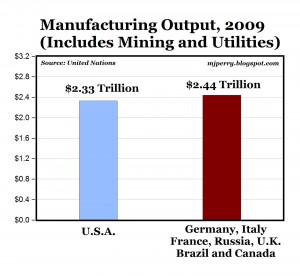One of the great things about the division of labor -- having each person do one job and do it well -- is the lengths to which complete strangers will go to make each others' lives better.
Take, for example, road signs. We drive by thousands of them each year. Have you ever thought about what it would take to make a better road sign? I haven't. But Don Meeker has.
The Road to Clarity - New York Times
In 1989, after his success with the waterways project, the State of Oregon approached Meeker with a commission to think up a roadside sign system for scenic-tour routes. The problem sounded modest enough: Add more information to the state's road signs without adding clutter or increasing the physical size of the sign itself. But with the existing family of federally approved highway fonts -- a chubby, idiosyncratic and ultimately clumsy typeface colloquially known as Highway Gothic -- there was little you could add before the signs became visually bloated and even more unreadable than they already were. ""I knew the highway signs were a mess, but I didn't know exactly why," Meeker recalled.
Around the same time Meeker and his team were thinking about how to solve the problem of information clutter in Oregon, the Federal Highway Administration was concerned with another problem. Issues of readability were becoming increasingly important, especially at night, when the shine of bright headlights on highly reflective material can turn text into a glowing, blurry mess. Highway engineers call this phenomenon halation and elderly drivers, now estimated to represent nearly a fifth of all Americans on the road, are most susceptible to the effect.
"When the white gets hit, it explodes, it blooms," Meeker, who has the air of a scruffy academic, went on to say.
And, he spent the next fifteen years coming up with a new font for road signs and getting it approved by the Federal Highway Administration. Isn't that fantastic?
Only an economic system that frees people from subsistence living can give people enough freedom and flexibility to spend 15 years designing a better road sign.
Or, take the story of UPS.
U.P.S. Embraces High-Tech Delivery Methods - New York Times
But increasingly, it is the researchers at its Atlanta headquarters, its technology center in Mahwah, N.J., and its huge four-million-square-foot Louisville hub who are asking the questions that will drive the company's future.
What if the package contains medicine that could turn from palliative to poison if the temperature wavers? What if it is moving from Bangkok to Bangor and back to Bangkok, and if customs rules differ on each end? And what if the package is going to a big company that insists on receiving all its packages, no matter who ships them, at the same time each day?
Increasingly, it is the search for high-tech answers to such questions that is occupying the entire package delivery industry. U.P.S. and FedEx are each pumping more than $1 billion a year into research, while also looking for new ways to cut costs.
Customers of both FedEx and U.P.S. can now print out shipping labels that are easily scannable by computers. Meteorologists at both companies routinely outguess official Weather Service forecasts. And both are working with the Federal Aviation Administration to improve air safety and scheduling.
The research at U.P.S. is paying off. Last year, it cut 28 million miles from truck routes "” saving roughly three million gallons of fuel "” in good part by mapping routes that minimize left turns. This year, U.P.S. began offering customers a self-service system for redirecting packages that are en route.
And now the U.P.S. researchers are working on sensors that can track temperatures of packages, on software that can make customs checks more uniform worldwide and on scheduling processes that accommodate the needs of recipients as well as shippers.
Absolutely incredible. UPS and FedEx are spending a combined $1 billion -- just to find a way to get a package to your door faster, cheaper, safer. Their researchers don't know me and they'll probably never meet me, but they're intensely focused on making my life better.
Only the profit motive produces that kind of incentive. (When was the last time a motor vehicle or postal employee cared about your time or happiness?) Only the division of labor allows that kind of single-focused effort.
Capitalism may not be a perfect economic system, but it's the only one I ever want to live in.
